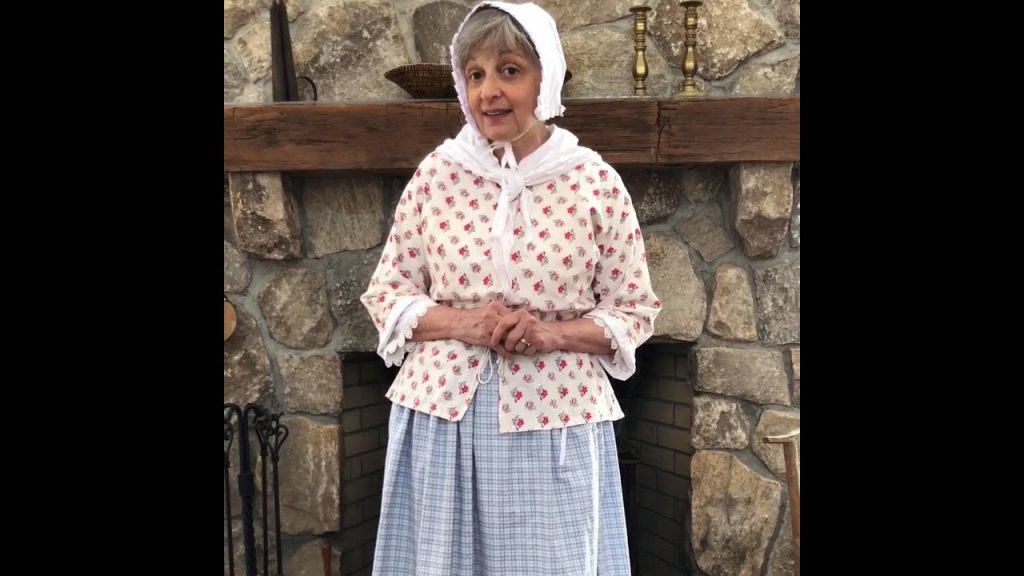In 2017, the Connecticut Legislature proclaimed the third Monday in April “Patriot’s Day,” to commemorate the battles of Lexington and Concord, the first ones in the American Revolutionary War. This year, the Historical Society, the Drum Hill Chapter of the DAR, Keeler Tavern Museum & History Center, and other organizations, encourage you to dress up in colonial garb to celebrate Patriot’s Day on the third Monday in April.
To inspire you to participate in “Get Colonial Day,” Candiss Cowan shows you how women dressed in the 18th Century.
New to Ridgefield, Candiss Cowan spent 35 years teaching high school and then retired to follow her passion for all things Early American. She spends her time learning new skills for all things old: quilting, spinning, weaving, candle making, and open hearth cooking among others. She is a woman born behind her times instead of ahead of them.
Introduction: How Women Dressed in the 18th Century
Candiss gives simple tips on how to create a colonial New England costume with minimum purchase, time, and effort, for Patriot’s Day.
Quick & Easy Colonial Costumes for Boys & Girls
Candiss gives simple tips on how to create a colonial New England costume with minimum purchase, time, and effort, for Patriot’s Day on the third Monday in April.
The video is divided into two sections, “Woman’s Costume” and “Man’s Costume”.
Make a Felt Pocket (No Sewing; All Ages)
Accessorize your colonial garb with a felt pocket. This easy version relies on gluing instead of sewing.
Project Materials:
- Felt (9 by 12 inches)
- Ribbon (long enough to go around waist)
- Glue
- Scissors
- Decorations (optional)
- Fabric Paint (optional)
Make a Practical Fabric Pocket (Sewing Required)
Candiss walks you through the steps to make a traditional 18th Century fabric pocket. You can sew this pocket by hand or with a machine.
Use printed or plain fabric — here, Candiss uses a paw-printed material to make a pocket she’ll use for walking the dog.
Project Materials:
- Cotton fabric (9 by 12 inches)
- Ribbon (long enough to go around waist)
- Scissors
- Decorations (optional)
- Fabric Paint (optional)
Make an Embroidered Pocket (Sewing & Embroidery)
If you have more time and skill, you can embroider the front of your pocket! This pocket project uses the same method as the one above, but with an additional step — embroidery — before sewing the outer seam.
Project Materials:
- Cotton fabric (9 by 12 inches)
- Ribbon (long enough to go around waist)
- Scissors
- Embroidery Thread and Hoop





